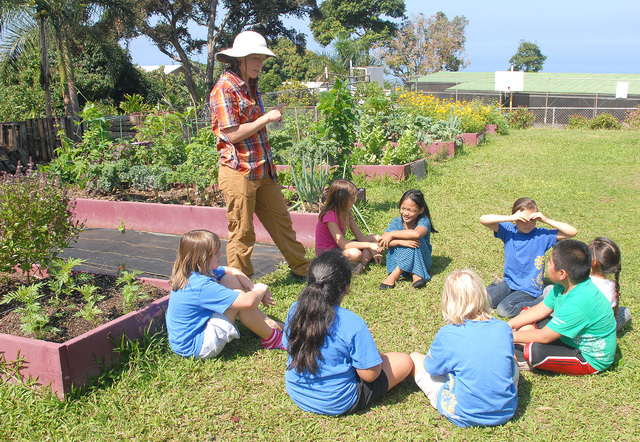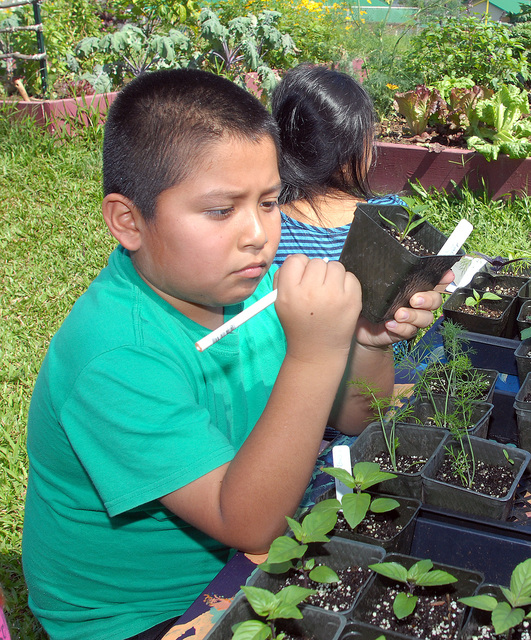HONAUNAU — Students at Honaunau Elementary school are too impatient to wait for April 22, so for the last five years, they’ve been celebrating Earth Day all year round.
HONAUNAU — Students at Honaunau Elementary school are too impatient to wait for April 22, so for the last five years, they’ve been celebrating Earth Day all year round.
A patch of land roughly one-half acre atop a small hill on the Honaunau campus serves as the site of the Discovery Garden, a horticulture program that children in grades K-5 all work in at least once a week as a part of their curriculum.
“They love coming out here, getting dirty and doing work,” said Aileen Force, assistant director of the program, who uses the garden as a venue for STEM classes. “We want to get them prepped for testing and middle school or high-school-level science, so we try to focus on some harder concepts that they’ve never been introduced to before.”
One such endeavor is a long-term compost project for the school’s third grade class. Divided into small groups, the class built multiple compost piles and now record weekly what they add to them. Each week, a new concept is added, such as creating a balance between nitrogen and carbon as a way of learning about chemical reactions.
Force said that building lessons on top of one overarching project helps to expand students’ knowledge in the long term while keeping them focused on a routine and creating a foundation for later learning.
And getting outside to expend a little energy never hurts, either.
“It’s incredibly engaging,” Force said. “It’s almost like they don’t realize they’re learning. It’s a whole different perspective, and it’s a skill you can use at home, too.”
Older students can occasionally be seen wielding shovels or picks to dig out new sections for the garden, and two years ago, a group of students designed and built a rainwater-based irrigation system that was actually approved by the Department of Health.
There is also an area of the garden cordoned off to focus specifically on local flora as an aspect of Hawaiian studies. There, children grow tea leaves, kalo and uala — a type of sweet potato. They also learn traditional medicinal uses for the Hawaiian plants they grow.
“I like that you get to actually see nature and express it and help nature grow,” said second-grade student Phoenix Meeks.
Another central focus for the students are starter plants or “starts,” which help fund the garden. Children plant, pot and label different plants or herbs, then teachers deliver them to Ace Hardware where they are sold to the public.
All the money goes into a store-credit account that Force and Melissa Chivers, the garden program director, use to buy seeds, potting soil and other supplies. The garden was initially funded with $300 from the school. Everything else was donated.
Community workdays and parent nutrition evenings are also incorporated into the program, and Force said parent volunteers are an integral part of expanding the activities available to students.
Second grader Kaija Leinonen said gardening class is one of her favorite in-school activities.
“What I like about being in the school garden is it reminds me of times I went to my great papa’s garden,” Leinonen said. “It just reminds me of the good times I had with him.”
Kylie Matsuoka said the only activity that trumps gardening for her is singing, a sentiment with which Leinonen quickly agreed. However, the second-grade vocalists frequently decide to combine the two activities, and soft singing can often be heard from the hilltop garden.
“I like to sing,” Leinonen said, “but usually I am like Snow White, and I whistle.”


